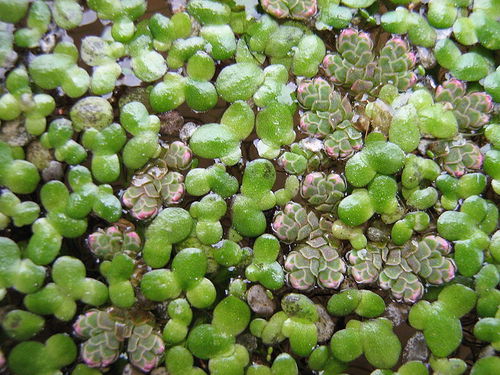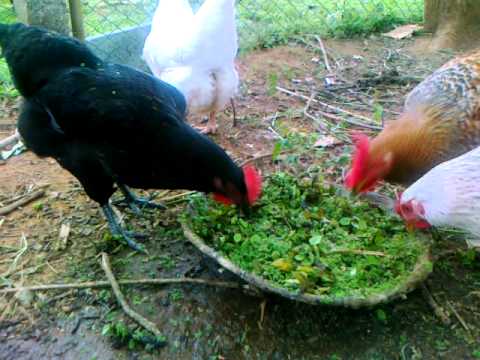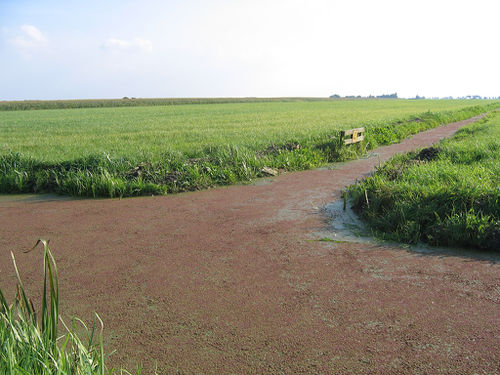Azolla: Difference between revisions
No edit summary |
|||
| Line 44: | Line 44: | ||
==Related Pages / Product Ecology == | ==Related Pages / Product Ecology == | ||
*Integrate with [[Aquaponics]] system (e.g. [[Tilapia]]) | *Integrate with [[Aquaponics]] system (e.g. [[Tilapia]]): grow azolla on wastewater | ||
*[[Ferrocement]] as pond lining (expensive but durable) | *[[Ferrocement]] as pond lining (expensive but durable) | ||
==Links== | ==Links== | ||
Revision as of 13:30, 28 April 2016

What is it?
"Azolla filiculoides" is a small fern that floats on water and is thus similar to the more familiar duckweed. It is native to North, Central and South America. Given appropriate nutrient and other conditions, Azolla can grow rapidly. It is rich in protein and minerals and can be used as animal fodder or for human consumption. While Azolla is not itself a nitrogen-fixing organism, it lives in symbiosis with certain cyanobacteria such as (Anabaena azollae) that fix nitrogen. Azolla may grow on somewhat brackish water, which expands the number of possible locations and uses.
Organizations
Yields
Duckweed and Azolla Towers
Azolla as the better microalgae farming
There has been long-standing hype about microalgae farming. In the 1950s, Chlorella was supposed to be the next thing that would solve all food and health problems. We have talked quite a bit here at OSE about Spirulina, but it requires highly alkaline water and needs specific chemical inputs ($) while Azolla grows on fish pond wastewater, compost leachate, silage leachate, etc.
Other microalgal organisms in this field besides Spirulina (which is the most widely cultivated one with an established market) are Chlorella (popular in Asia), Dunaliella (thrives in salty water), Haematococcus (for astaxanthin pigment), Schizochytrium (for DHA), Aphanizomenon, Botryococcus braunii (biofuel), Nannochloropsis (biofuel and omega-3). Being microalgae, these are all more difficult to harvest than larger organisms. Azolla is very easy to harvest. Azolla exists in symbiosis with the microalga Anabaena. So there we have it, our microalgae, just better.

Uses
- animal fodder: cows, chickens, fish, pigs, goats, etc.
- for human consumption: salad; powder
- source of nitrogen fertilizer (widely used as N-source in rice cultivation in China during last 1000y)
- for biogas and biodiesel (see below)
- wastewater treatment
- initial soil biomining for nutrients: phosphorus and potassium from subsoil / mud, for subsequent use in agriculture
Azolla Biodiesel
Because of its high oil content, Azolla may be a potential feedstock for biodiesel production. A recent open access paper analyzed the: "Lipid Yield and Composition of Azolla filiculoides and the Implications for Biodiesel Production". Another publication: "Biodiesel Production from Azolla filiculoides".
Videos
- "Cultivation of Azolla as a sustainable feed for livestock" - From India and all in Telugu but good footage anyway: azolla as feed for cows, chickens, pigs, goats, fish, etc.
- "Azolla cultivation for cattle feed" also from India
- "The Azolla Project at Colorado State University"
- "Project Azolla: from floating fern to renewable resource" (good overview about a project at the University of Utrecht)
Related Pages / Product Ecology
- Integrate with Aquaponics system (e.g. Tilapia): grow azolla on wastewater
- Ferrocement as pond lining (expensive but durable)
Links
- Nordic Folkecenter: "The Azolla Plant"
- Wikipedia: "Azolla filiculoides"
- MicrobeWiki: Anabaena azollae
- Dave's Garden (Blog): "Time for a look at a little plant with a big future"
